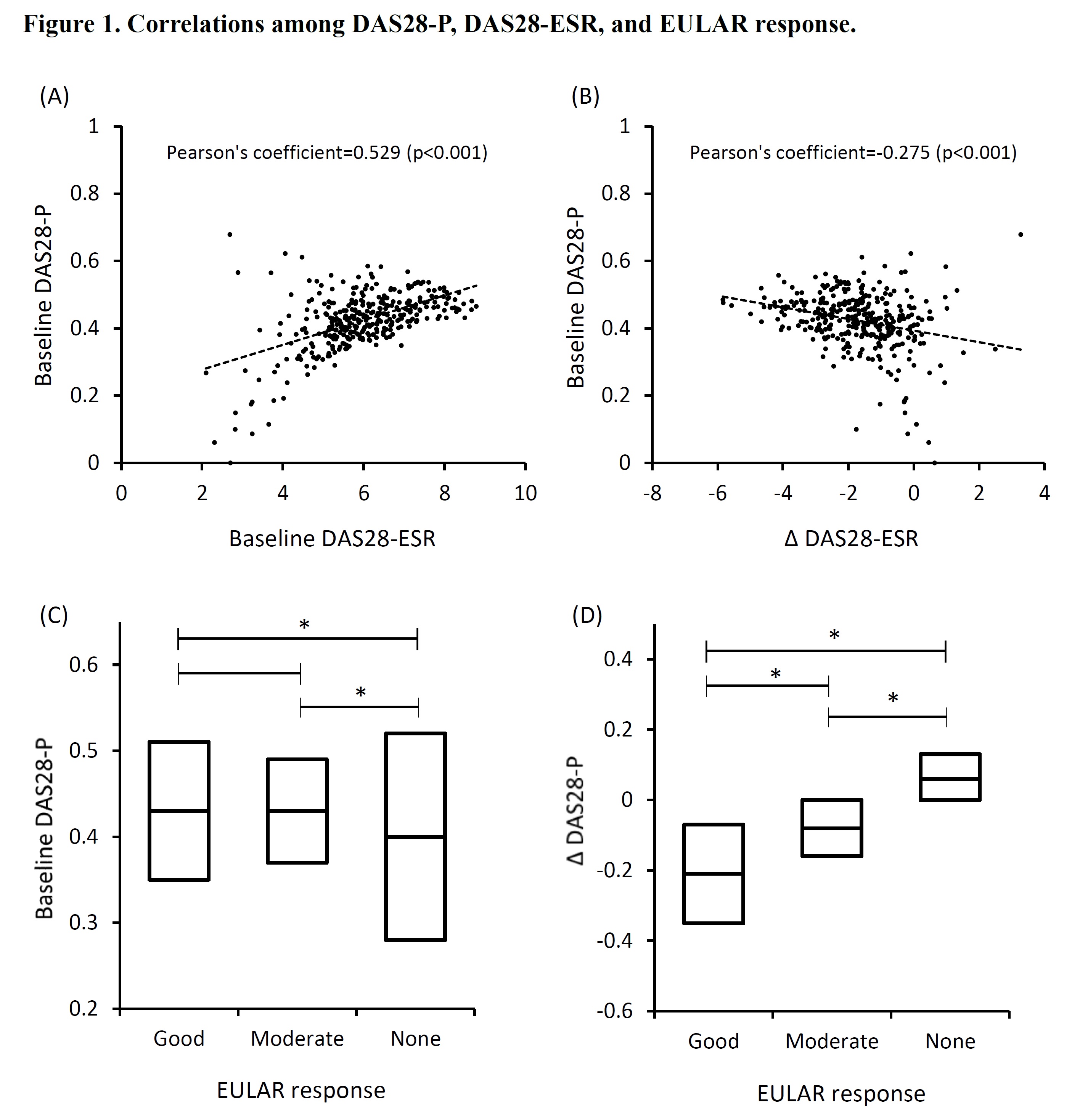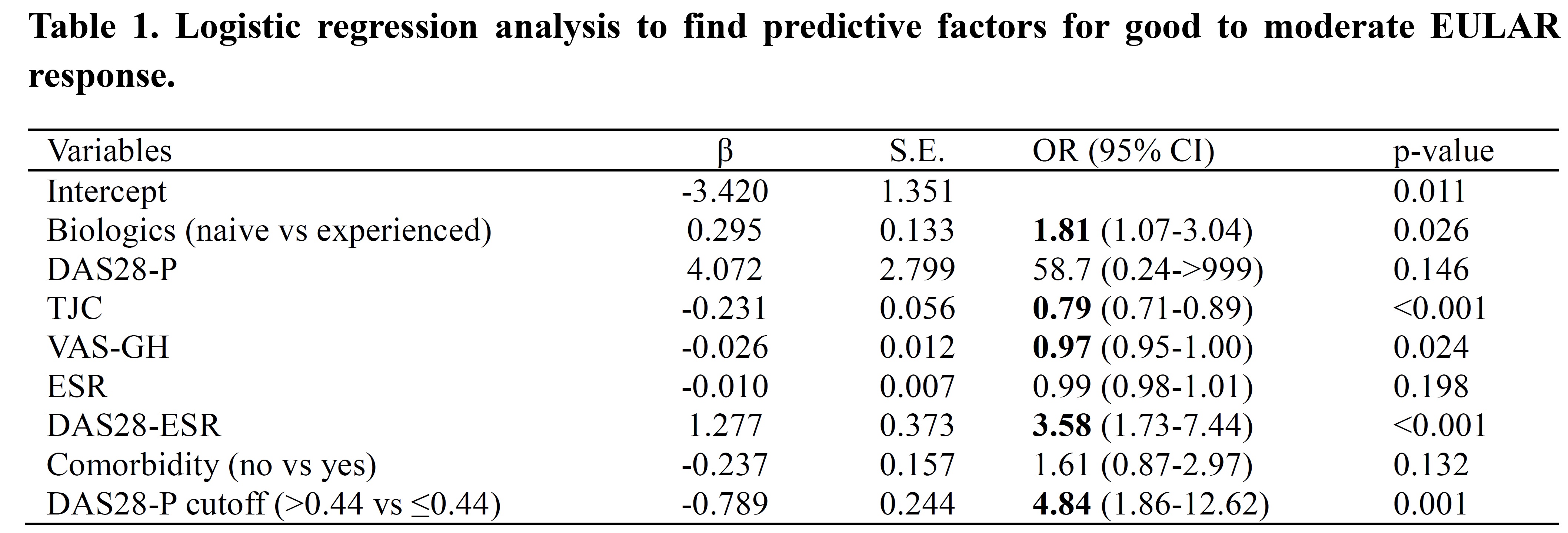Session Information
Date: Monday, November 6, 2017
Session Type: ACR Poster Session B
Session Time: 9:00AM-11:00AM
Background/Purpose: Response prediction of certain biologic agents for the treatment of rheumatoid arthritis (RA) is still an unmet need in real-world clinical practice. To reduce trial and error, discovering easily-accessible predictive markers for treatment response would be beneficial both for patients and healthcare systems. The patient-reported components tender joint count (TJC) and visual analogue score (VAS-GH) of the 28-joint disease activity score (DAS28) has been termed DAS28P and investigated as a predictor to the response to biologic agents, mostly TNF inhibitors (1, 2). We aimed to evaluate DAS28P as a predictor of EULAR response to abatacept in patients with RA.
Methods: The study population was a prospective cohort of Korean patients with RA who were followed up for a nationwide post-marketing survey of abatacept. By applying 6 month last observation carried forward method, 341 patients were involved in the analysis stratified upon the EULAR response criteria (3). Univariate analysis including chi-square test or Kruskal Wallis test were conducted for demographic factors, medical history, and clinical indices. Correlation of DAS28P with DAS28-ESR, change of DAS28-ESR, and EULAR response group were evaluated by Pearson¡¯s coefficient (PC) or Student t-test. Logistic regression analysis was used to predict good to moderate EULAR response to abatacept in the study population.
Results: Presence of comorbidities, previous exposure to biologic agents, baseline DAS28-ESR, three of its components (tender joint counts, VAS global health, and ESR) and baseline DAS28P were significantly associated with EULAR response of abatacept at 6 months. Baseline DAS28P had positive correlation with baseline DAS28-ESR (PC=0.529, p<0.001) (Fig 1A) and negative correlation with interval change of DAS28-ESR (PC=-0.275. p<0.001) (Fig 1B). Stratified upon EULAR response, a group with good or moderate response had higher baseline DAS28P and lower interval change (Fig 1C, 1D). ROC curve of DAS28P and EULAR response revealed significant association (AUC=0.590, p=0.014). Logistic regression analysis showed that a DAS28P cutoff of >0.44 had the strongest association (OR=4.84, p=0.001) with good to moderate EULAR response (Table 1).
Conclusion: The subjective proportion of baseline DAS28, the DAS28P, is predictive of response to abatacept with a higher baseline DAS28P associated with a favorable therapeutic response of abatacept at 6 months after treatment initiation.
To cite this abstract in AMA style:
Lee JS, Ahmad H, Shim SC, Bae SC, Song YW, Lee EY. A Higher DAS28P, the Subjective Proportion of the DAS28, Predicts a Favorable Response to Abatacept in Rheumatoid Arthritis [abstract]. Arthritis Rheumatol. 2017; 69 (suppl 10). https://acrabstracts.org/abstract/a-higher-das28p-the-subjective-proportion-of-the-das28-predicts-a-favorable-response-to-abatacept-in-rheumatoid-arthritis/. Accessed .« Back to 2017 ACR/ARHP Annual Meeting
ACR Meeting Abstracts - https://acrabstracts.org/abstract/a-higher-das28p-the-subjective-proportion-of-the-das28-predicts-a-favorable-response-to-abatacept-in-rheumatoid-arthritis/


